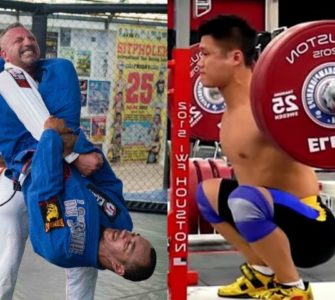We often talk about the many incredible benefits of brazilian jiu-jitsu but what often gets left by the way side is that there are several draw back.
Like any activity, bjj also caries some risk of injury and overuse injuries as well. You’ve surely heard anecdotal evidence about the state of fingers of Keenan Cornelius, Miyao brothers, and many many more grapplers.
First of all, when talking about arthritis there are some distinctions – there’s osteoarthritis and rheumatoid arthritis. Osteoarthritis is caused by the breakdown of joint cartilage. Cartilage acts as a cushion between the bones that form a joint. Cartilage loss can cause bone to rub on bone in a joint — which in turn is very painful.
Mechanical stress on joints underlies all osteoarthritis, with varied sources of mechanical stress, including misalignment and mechanical injury all contributing to the condition.
Rheumatoid Arthritis is a chronic inflammation. It’s often classified as an autoimmune disease. It often involves multiple joints.
Brazilian Jiu-Jitsu involves a lot of pulling, gripping, grabbing wrenching, and throwing. Thus, it could potentially trigger wear and tear in the joint cartilage, which could result in the development of osteoarthritis.
Brazilian Jiu-Jitsu has been linked with dislocations, mangled fingers or toes, joint pain, and hand injuries. While very little research has been conducted on this sport and how it is linked with arthritis, it is easy to assume the link between the two.
One area that has been researched is the link between judo and the risk factor for onset of osteoarthritis in the finger joints.
In 1984, Frey A, Müller W. discovered that all judokas suffer from severe osteoarthritis of the distal interphalangeal joints (DIP). Researchers suggest that re-injury, over-stress, and micro-trauma over a period of time could accumulate and manifest as arthritis.
While it may seem very bleak, there are things you can do – one being you can combine training gi and nogi ultimately resulting in giving your fingers a break. Alternatively you can try to use nogi grips more often than not.
Another alternative is to work on strength – stronger muscles can stabilize joints and improve range of motion and even help in pain reduction.


















